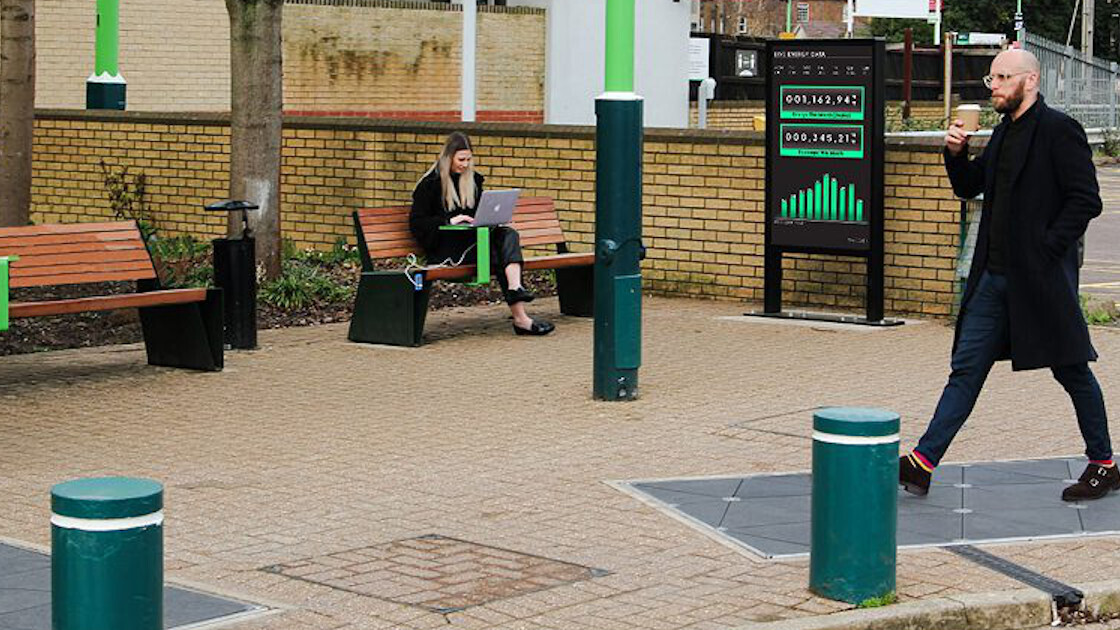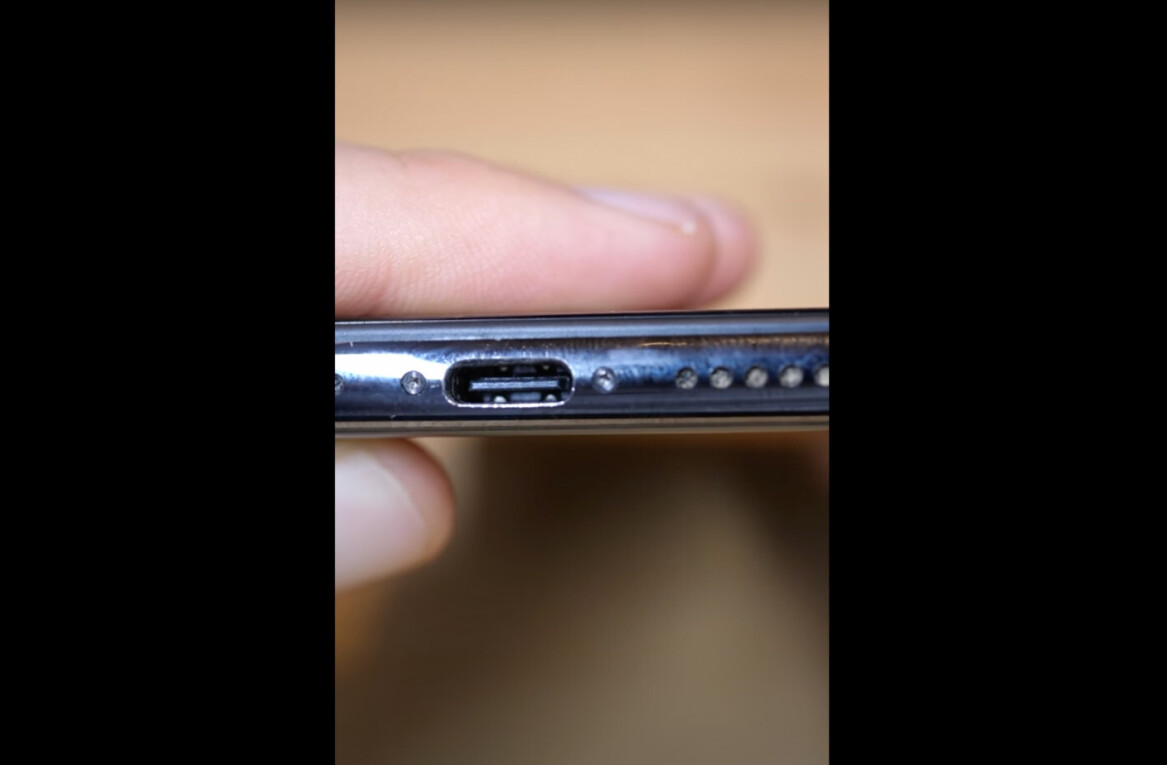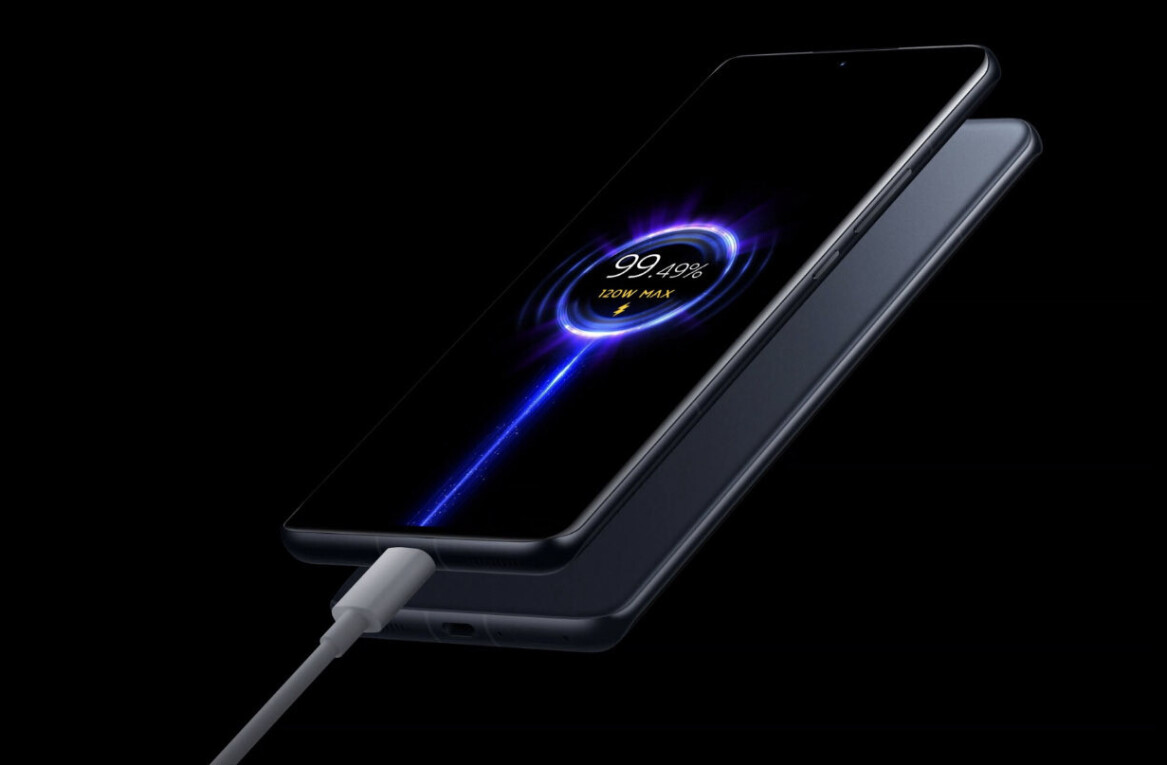
Two walkways made from kinetic floor tiles have been installed at Leighton Buzzard train station, through a partnership between Central Bedfordshire Council and technology provider Pavegen.
As pedestrians walk across the paving system supplied by the UK start-up, the weight from their footsteps compresses electromagnetic generators below, producing electricity which will be used to power two USB-charging benches as well as a digital screen.
Funded by the Department of Transport through the £22.9 million (US$31.7 million) ADEPT SMART places Live Labs Programme, the pilot is understood to be the first of its type at a UK transport hub and the aim is to demonstrate the technology for other local authorities.
Andrew Selous, MP for South West Bedfordshire, said: “I like the fact that it engages people, involves exercise and it is creating clean electricity all the time. I think that connection between people and the energy being created through movement is a really good join-up.”
The digital screen will show how much energy is being generated as well as displaying other messages.
Pavegen is also working alongside Central Bedfordshire Council to offer commuters rewards via an app. This could be used to incentivize public transport use or local shopping to aid economic recovery, for example.
Renewable energy
In 2019, Central Bedfordshire Council secured £1.05 million through Live Labs to explore how to harvest renewable energy from solar, kinetic and thermal sources. At scale, the energy could be used to power infrastructure such as streetlights and electronic road signs.
Giles Perkins, Live Labs Programme Director, said: “The untapped footfall energy at our transport hubs represents a real opportunity to provide sustainable energy sources to power bespoke applications, while engaging audiences and encouraging behavioural change. This trial will help demonstrate the viability of the technology and could be a step change in the way transport hubs engage with commuters.”
Another pilot which explores how probes inserted into a Bedfordshire car park can generate geothermal energy is due to be completed later this month. It will show how this energy can be stored and released when necessary to de-ice a car park surface and heat a building in the winter. The trial aims to help the council understand if and how the technology could be applied in new buildings such as leisure centres and schools. A further initiative looks at capturing solar energy from road surfaces.
Pavegen has around 200 deployments across 36 different countries, including applications for cities, transport hubs, retail, interactive education and commercial brands. The V3 tiles produce up to four joules of off-grid electrical energy per step.
A spokesperson for Pavegen told Cities Today it is difficult to say what the energy output at the train station is likely to be as it is dependent on footfall, which is unpredictable due to Covid-19. “The benefit is really about how the community can come together and this product can be used as a starting point for a conversation about sustainability,” they said.
In total there are eight local-authority-led Live Labs which are piloting technology across energy, data, materials and mobility. Others are evaluating plastic roads, video analytics and data-driven transport management.
Do EVs excite your electrons? Do ebikes get your wheels spinning? Do self-driving cars get you all charged up?
Then you need the weekly SHIFT newsletter in your life. Click here to sign up.
Get the TNW newsletter
Get the most important tech news in your inbox each week.





